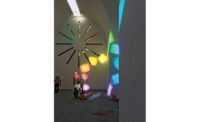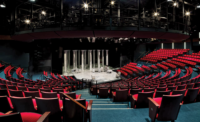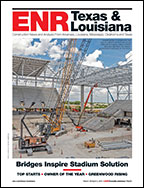Best of the Best Projects 2018
Best Cultural/Worship: Austin by Ellsworth Kelly

Two of the three art glass installations are shown above, and each is comprised of hand-blown colored glass.
PHOTO BY TOM BUTLER

Two of the three art glass installations are shown above, and each is comprised of hand-blown colored glass.
PHOTO BY TOM BUTLER


Owner The University of Texas at Austin
Lead Design Firm Overland Partners Inc.
General Contractor Linbeck Group LLC
Civil Engineer Garza EMC
Structural Engineer Datum Engineers
MEP Engineer Arup Texas Inc.
Austin is a permanent piece of the Blanton Museum of Art’s collection and is the only building designed by artist Ellsworth Kelly, who gifted the design concept to the museum in January 2015. It was Kelly’s final project before his death in December 2015.
This $10.5-million, 2,715-sq-ft stone building was originally designed more than 30 years ago and was inspired by Romanesque and Gothic churches Kelly studied while in France after WWII.
“What was difficult or challenging was aligning the artist’s design with building codes and standards,” says Michael Garza, project manager with Linbeck Group. Every aspect of the installation had to be approved by the artist before construction began, resulting in a prolonged preconstruction period.
The project was originally designed as a free-standing space with no power or HVAC, which meant there wasn’t adequate clearance to accommodate such infrastructure. Thus, the team turned to solutions such as a “light raft” to hide the ductwork and diffusers.
“What people don’t understand about the simplicity of the building is there’s nothing to hide your mistakes,” Garza says. “We had a 1⁄16-inch tolerance on the exterior stone at any given plane. It was almost unrealistic parameters that the team pulled off.”
One of the most challenging aspects of the project was coordinating internationally supplied materials to the design’s precise specifications. The stone was quarried and cut in Spain, while the art glass was hand blown in Germany and the marble panels quarried in Italy and finished in California.
Each of the 33 individual units for the colored art glass windows required unique installation parameters due to the various window positions in the exterior wall design. A combination of computer design, lasers and full scale plywood templates helped the team achieve a zero-edge effect on each of the glass installations.
“For the appearance of such a simple building, it was very complex [and required] a lot of coordination,” Garza says.







